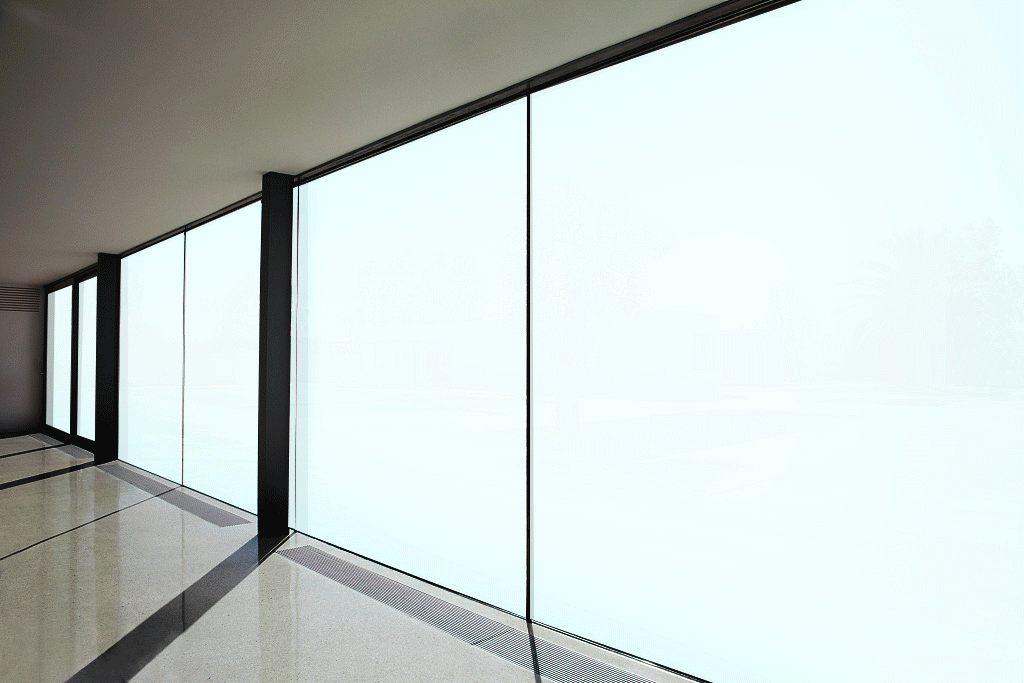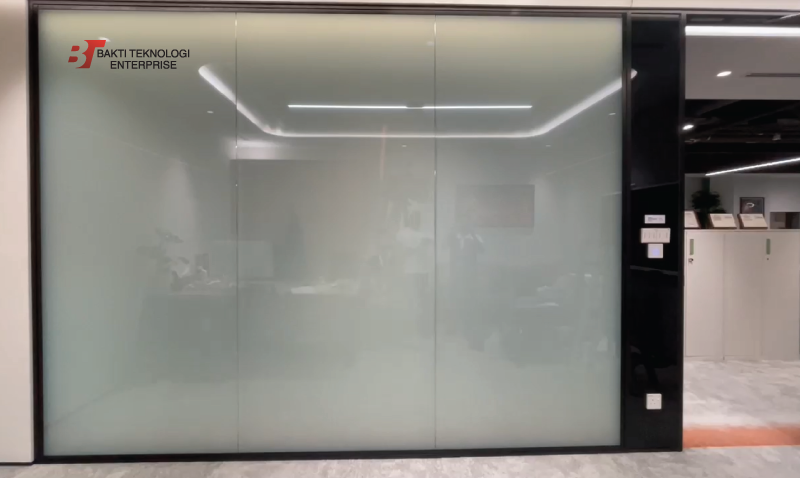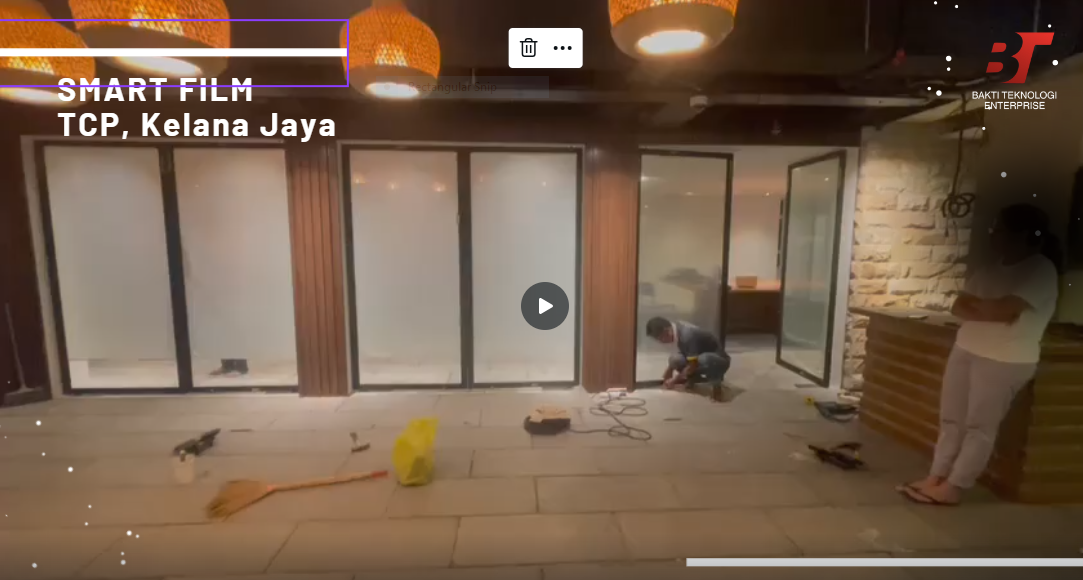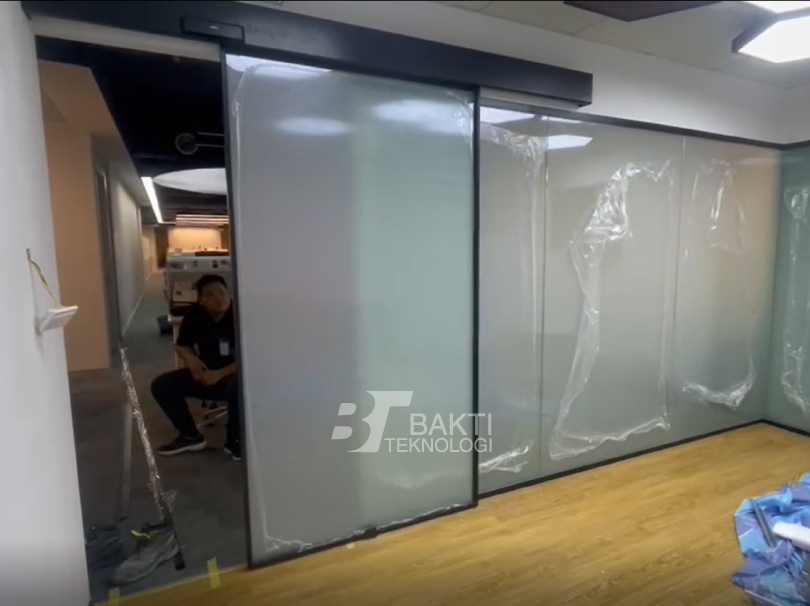What is Smart Film?
Smart film is a type of film that can be switched from opaque to transparent by applying an electric current. The film is made up of multiple layers, including conductive and transparent electrodes, a liquid crystal layer, and a polymer layer.
Smart film is capable of changing its optical properties in response to an external stimulus, such as an electric current or light. This innovative technology has been developed in recent years and has numerous applications across various industries. The film is composed of multiple layers, including conductive and transparent electrodes, a liquid crystal layer, and a polymer layer. When a current is applied to the electrodes, the liquid crystal layer changes its orientation, causing the film to switch from opaque to transparent or vice versa.
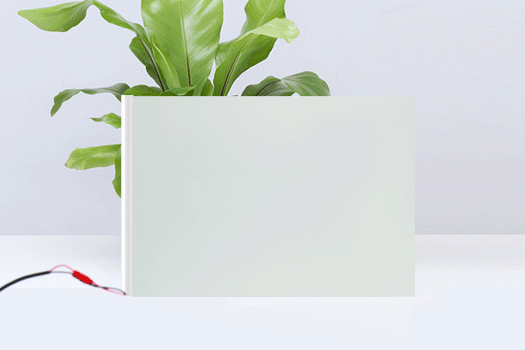
How Smart Film Works?
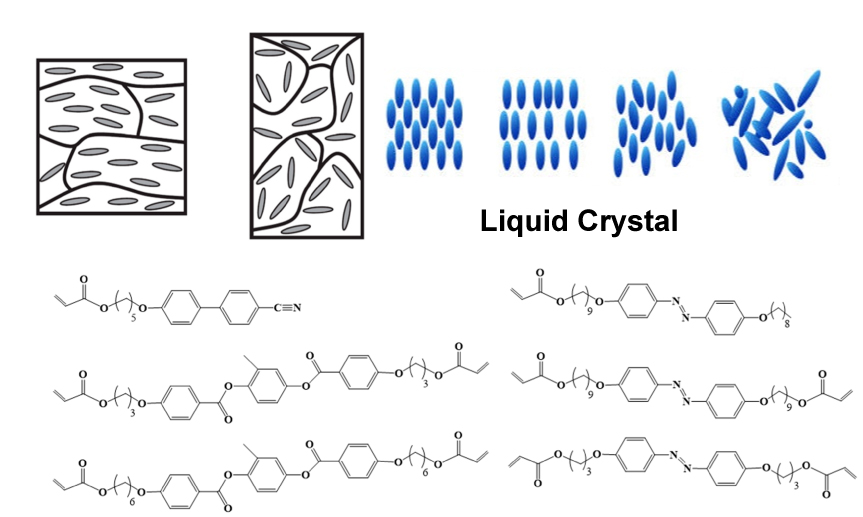
Liquid Crystal
Smart film consists of a layer of liquid crystal molecules between two conductive and transparent electrodes.
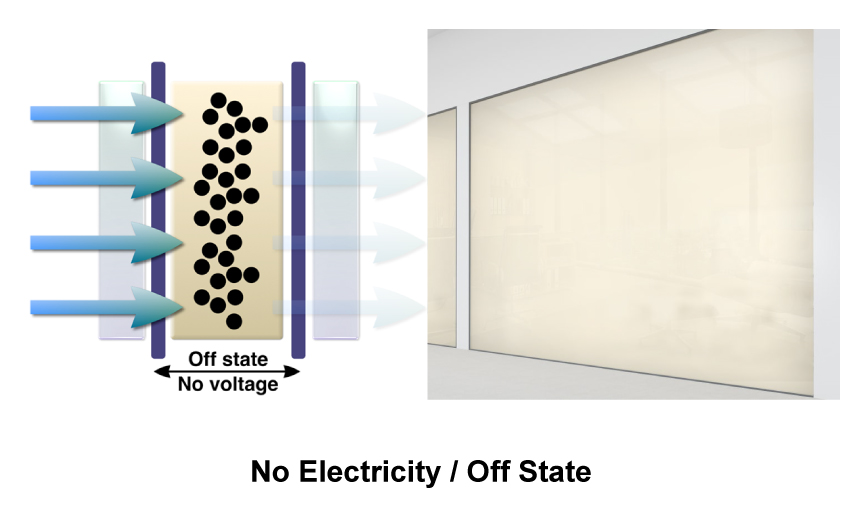
Electricity OFF
When no electric current is applied, the liquid crystal molecules are randomly arranged, making the film appear opaque.
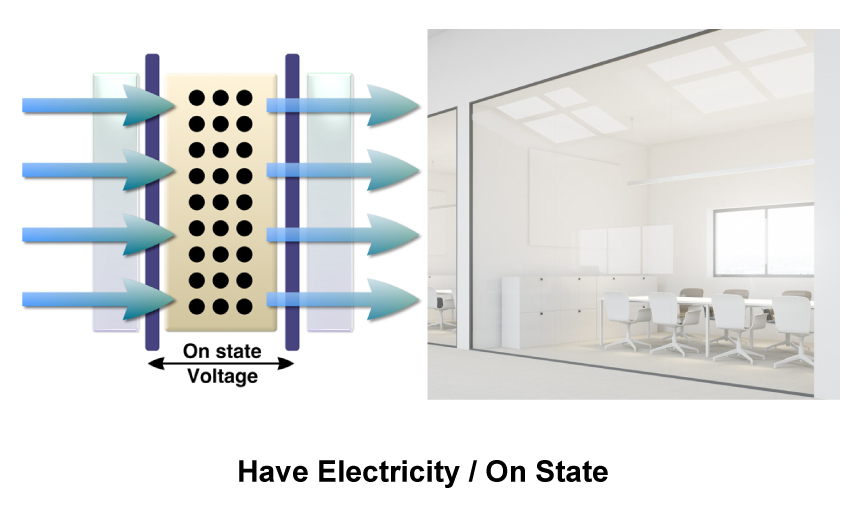
Electricity ON
When an electric current is applied to the electrodes, the liquid crystal molecules align themselves in a specific orientation, allowing light to pass through and making the film appear transparent.
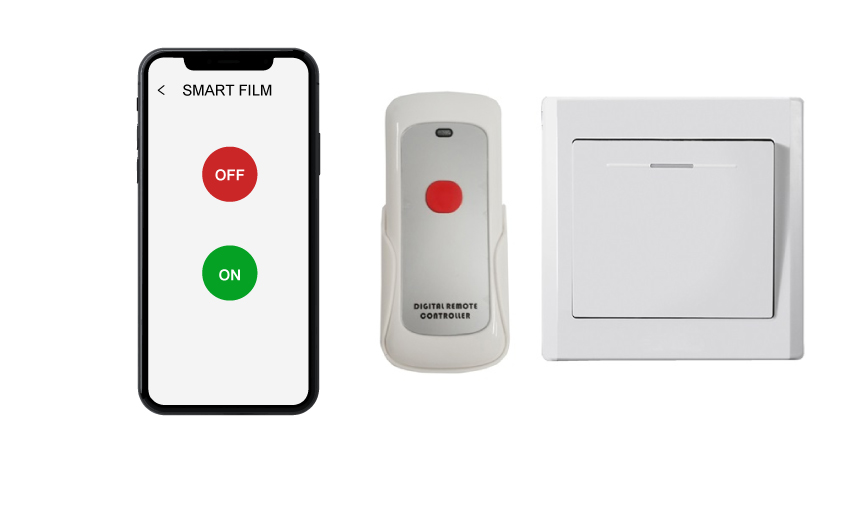
Control
Smart film can be controlled using a switch, remote control, or a smart device app.
Benefits of smart film:
The benefits of using smart film:
- Privacy control: Smart film allows users to control their privacy by switching between opaque and transparent modes with the touch of a button or a remote control.
- Energy efficiency: Smart film can be used to create energy-efficient windows by reducing the amount of heat that enters a building, thereby reducing energy costs.
- Security enhancement: Smart film can be used to create bullet-resistant glass, providing an additional layer of security in high-risk areas.
- Versatility: Smart film can be used in various industries and applications, including architecture, automotive, healthcare, and retail.
- Aesthetics: Smart film can be used to create decorative displays and dynamic projections, enhancing the visual appeal of any space.
- Easy installation: Smart film is easy to install and can be applied to existing glass surfaces, making it a cost-effective option for renovation and upgrading projects.
- Low maintenance: Smart film requires minimal maintenance and can last for many years, making it a durable and long-lasting investment.
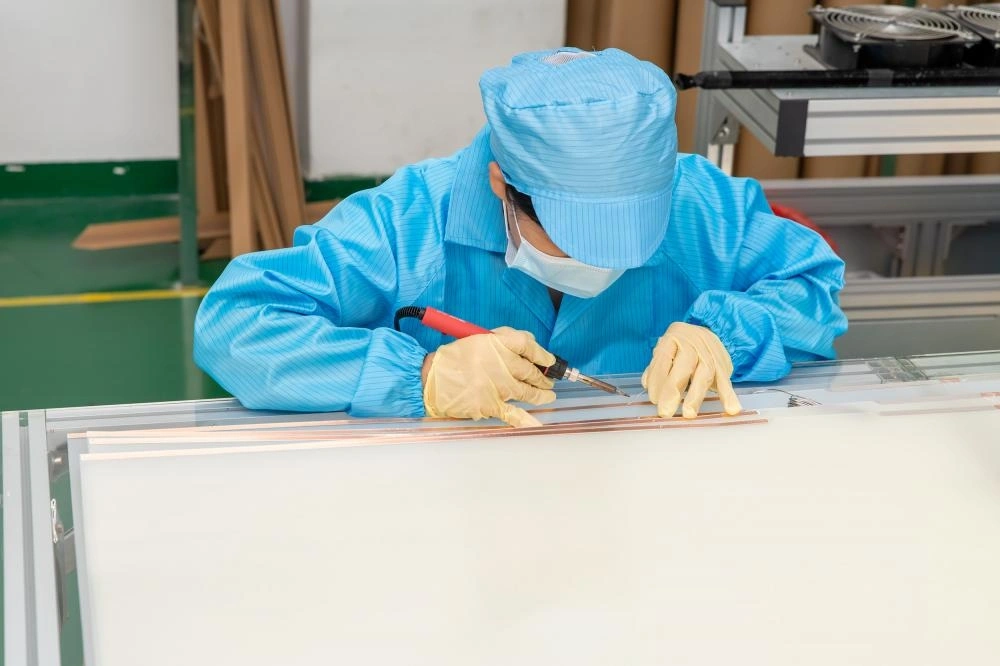
Invention and History
The invention of smart film is attributed to the German company SPD Technologies, founded in 1986 by Klaus and Wolfgang Fezer. The company’s initial focus was on developing electronically tintable glass, which eventually led to the development of smart film. Smart film was first introduced to the market in 1995 and has since become increasingly popular across various industries.
The technology behind smart film involves a liquid crystal layer that can change its orientation in response to an electric current or other stimuli, allowing the film to switch from opaque to transparent. This innovation has revolutionized the glass industry, providing a wide range of applications that were previously not possible. Today, smart film is manufactured by several companies and is used in various industries, including architecture, automotive, healthcare, and retail.
